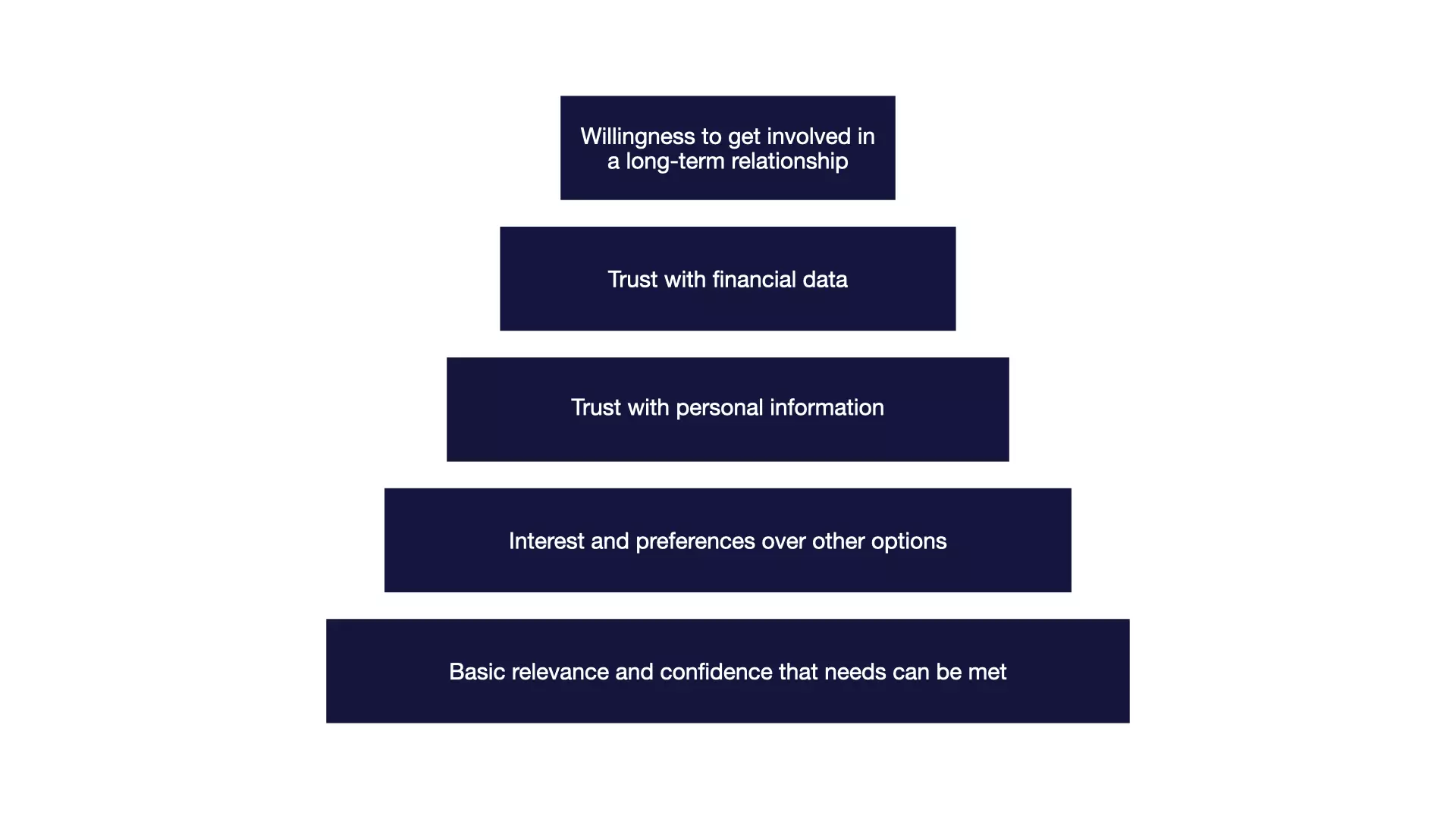Five points through which websites radiate trust
According to the 2018 Salesforce Report, customers are proven to be 95% more loyal to brands they trust. But how do they build trust? Before you can build trust, you need to understand how trust is built in the first place. The Nielsen Norman Group, a consultancy firm, has created a model for this: The Pyramid of Trust, which contains 5 different levels.
The foundation, i.e. the first level, revolves around the general question of whether all criteria are met in order to earn trust. Customers ask themselves questions such as: Does the site represent my interests? Can the site help me achieve my goal? And more importantly: Is the site reputable?
At the second level, customers compare the website with other options. A decision is made here: Either stay with the website or go to the competition.
At the third level, customers decide whether they trust the website with their personal information for registration. They also ask themselves whether the time they have to spend on this is worth it.
The fourth level ties in with the third level, as the website must now also be trusted with sensitive and financial data. Customers rightly ask themselves whether they want to take this final risk.
In the final and fifth level, customers are ready to build a relationship with the website and purchase further services or products from the site in the long term. However, this level is never final, because trust that has been gained can be lost just as quickly.
So how do websites manage to radiate trust?
1. qualitative design
The visual appearance and the presentation of flawless and high-quality content alone is already a big winner. For example, it is noticeable whether the color scheme and the communication via the texts are adapted to the identity of the company and consistent with the offers. The use of low-quality images, the use of links that have no function or similar errors should be avoided.
2. create transparency
Hiding information or offers from customers behind a mandatory login window often looks unprofessional or even intrusive. Therefore, everything relevant should be made visible and accessible. A detailed explanation of the processes of the service offered, all details about products and a well-maintained FAQ also show customers that possible challenges when using the website have been addressed.
3. emotional accessibility
Sections such as "About us" provide access to a website on an emotional level. Using your own pictures instead of stock photos also helps to give the site a personal touch.
4. enable contact
A well-functioning customer service and easy-to-find contact information ensure that contact can be made quickly and easily. On the one hand, this leads to increased customer satisfaction, as they can get straight to the solution they are looking for - contacting us. On the other hand, it conveys trust, as good and fast customer service assumes that real people are dealing with a problem and trying to solve it. This reduces or even eliminates the feeling that it could be a scam and at the same time, customers know that their concerns are taken seriously and that they can always count on support.
5. use of different channels
By also being represented on social media platforms, companies give customers an even more detailed insight into what is happening at the company. Customers can exchange ideas in the comments and view reviews and examples.
A few simple steps can therefore create a basis of trust for customers. Ultimately, you can always start with yourself as a visitor to a website and ask yourself the question: Would I want to stay on a website that does not offer the points listed above?

